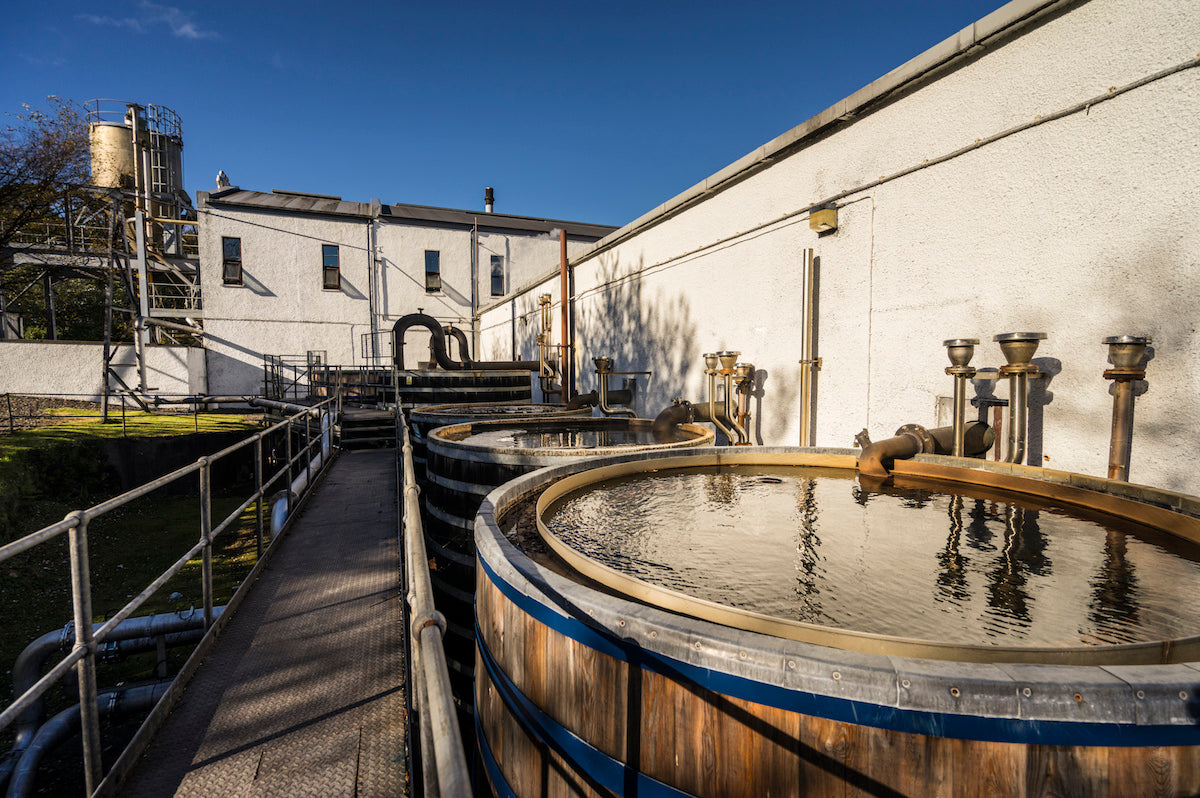What on earth are worm tubs?

You probably spotted something called worm tubs when you were reading about this month’s Craigellachie – fear not, it’s nothing to do with the common invertebrate, but is actually a complex, traditional piece of whisky-making kit.
Once you actually see a worm tub condenser, it’s much easier to see where the initially off-putting name comes from. Craigellachie is indeed famed for using the condensers, but other distilleries such as Mortlach and Talisker use them, and even the newly-revived Rosebank will have replicated worm tubs – an entire third of Diageo’s 27 distilleries have them!
First, a bit of etymology. Though, yes, it is worm-like, the word ‘worm’ is actually the old name for a serpent. So nowadays I guess it would be called a snake tub – cooler, or more sinister? You decide.
How do worm tubs work?
The lyne arm (the copper tube that connects the pot still to the condenser) at the top of the still is connected to a coiled copper pipe (the ‘worm’), which goes down into the huge tub which is filled with cold water. Generally, you’ll find these outside. So as the spirit vapour travels down the worm and cools, it condenses back into a liquid.

The more modern alternative to using a worm tub is a shell and tube condenser, which came about in the late 1960s. The copper ‘shell’ is filled with around 100 tiny copper tubes. These tubes are filled with cold water, and the spirit vapour fills the space around the tubes, condensing when it hits the cold copper.
The difference between the two is to do with speed and copper contact. There is so much more copper coming into contact with the spirit in the shell and tube condenser, and generally the condensing occurs more quickly in a worm tub.
What does this mean for flavour?
Copper is used hugely throughout the whisky-making process, from stills to condensers. The reason for this is because, through the wonders of science, it’s able to remove and hold onto the heavier compounds (like sulphur) that you’ll find in new make spirit vapour. So the less contact with copper, the heavier style of whisky you’ll achieve. Contrast this with Glenmorangie’s famously tall copper stills (the tallest in Scotland, reaching around five metres), and it makes sense why the distillery is known for its lighter, fruitier style of whisky.

But not everyone wants a light spirit, hence why worm tubs are still favoured by some distilleries over the more efficient shell and tube. Because the water in the tubs is often incredibly cold, usually drawn from nearby rivers and water sources, it condenses almost immediately with minimal copper contact.
The most distinctive flavours are meaty, sulphury, and savoury – which, by themselves, don’t sound like what you’d want in a whisky, but make for a bold sipper. Often, a long period in cask can mean that those distinctive flavours are slightly lost over time, but that oily, viscous texture remains.
How did you find the Craigellachie 17 Year Old from this month’s box? Let us know!
Jess 🥃



